The Grand Canyon National Park stands as one of the most spectacular natural wonders on Earth, drawing nearly 5 million visitors annually. Stretching across 1,218 square miles in Arizona, this mile-deep, up to 18-mile-wide canyon carved by the Colorado River offers breathtaking vistas and a window into millions of years of geological history. Whether you are a seasoned hiker or a casual traveler seeking stunning views, the Grand Canyon promises an unforgettable experience.
This comprehensive guide covers everything you need to know for an enriching visit—from how to get there and navigate the park, to where to stay, what to eat, and must-do activities. For travelers planning their adventure near Southern Utah’s vacation rentals, this guide also offers insights to make the most of your trip.
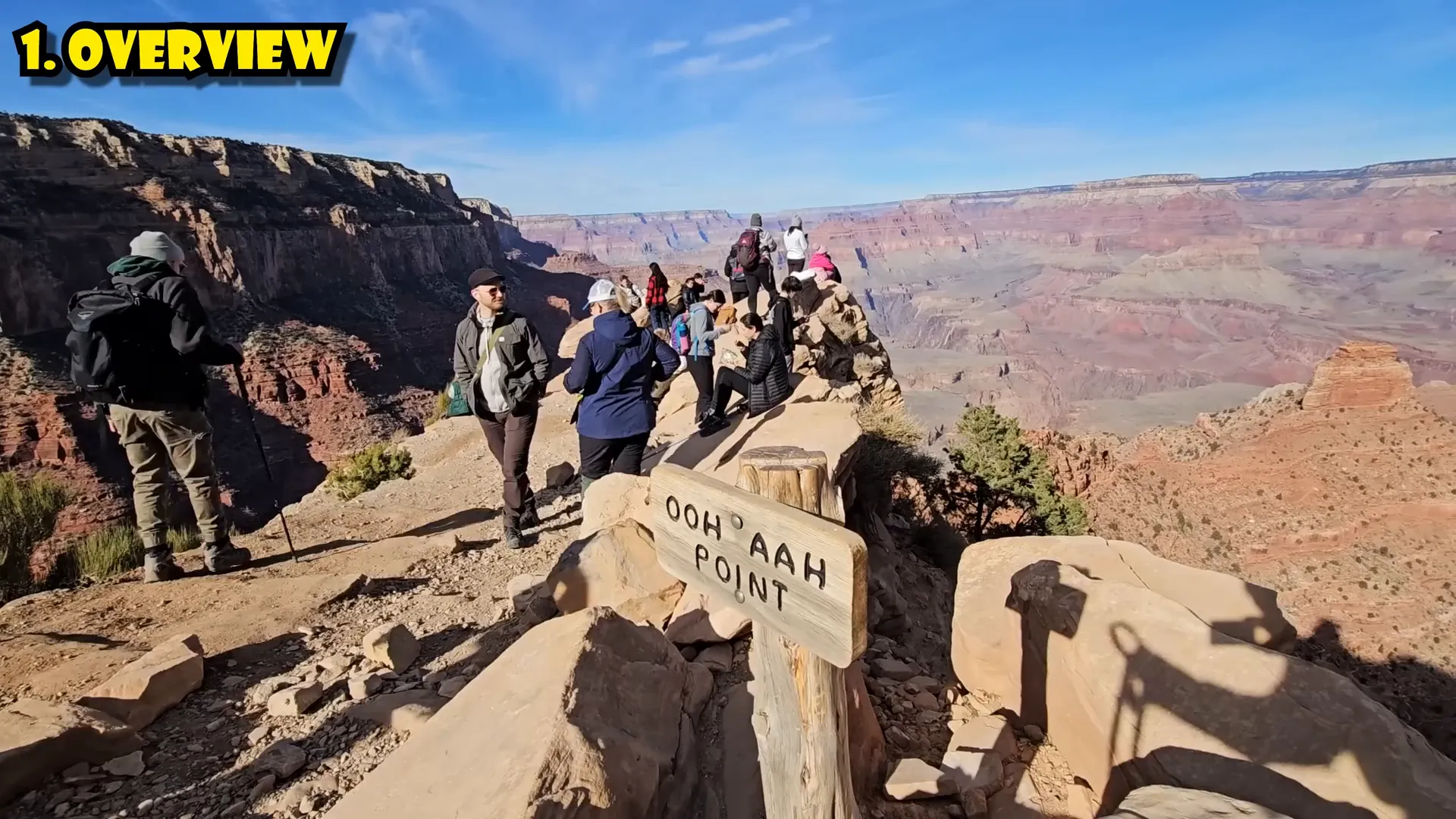
Understanding the Grand Canyon: Orientation and Key Areas
The Grand Canyon is divided into several distinct areas, each offering unique experiences:
- South Rim: The most popular and accessible part of the park, home to the Grand Canyon Village, the iconic El Tovar Hotel, Mather Point (the main viewpoint), and the primary visitor center. It features multiple visitor centers and offers extensive amenities and services. The South Rim is open year-round.
- North Rim: Located on the opposite side of the canyon, this area is more remote and less visited. It is only open seasonally during spring, summer, and fall due to winter closures caused by cold and icy conditions. The North Rim features a lodge, restaurant, and limited campgrounds, providing a quieter experience.
- Grand Canyon West: Operated by the Hualapai Native American tribe, this area is outside the National Park and is famous for the Skywalk—a glass bridge that extends over the canyon. While fascinating, it is distinct from the National Park experience.
Getting oriented is easier with the large map displayed outside the South Rim Visitor Center, showing key locations such as Mather Point, the Village, Hermit’s Road, and major hiking trails like the Bright Angel and South Kaibab Trails.
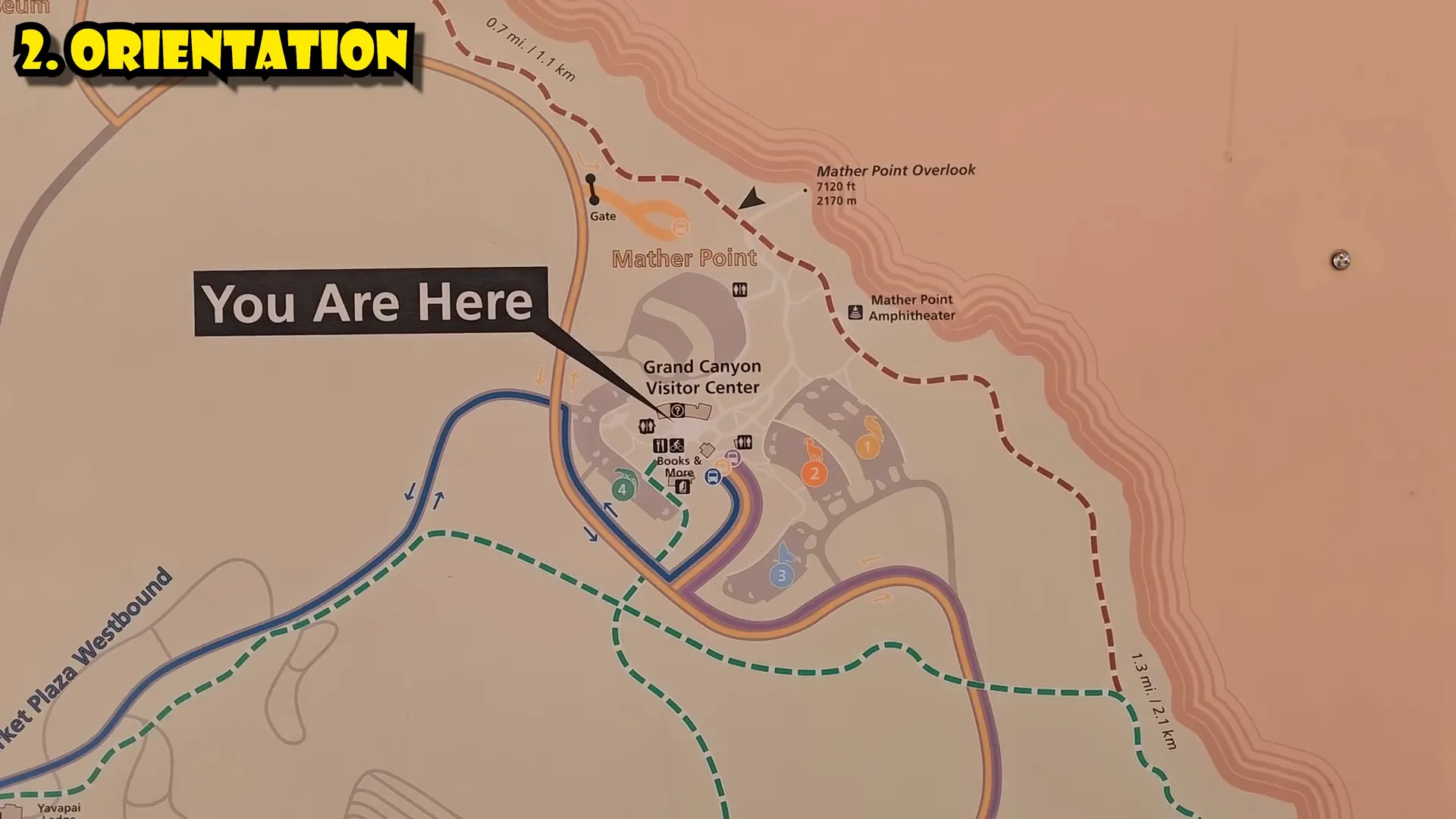
Getting to the Grand Canyon: Travel Tips and Entry Information
The Grand Canyon is accessible by road from several major cities:
- Phoenix, Arizona: Approximately a 4-hour drive north to the South Rim.
- Las Vegas, Nevada: Around 4.5 hours by car, making it a popular gateway for visitors.
- Los Angeles, California: A longer journey, roughly 8 hours by car.
The closest airport with regular commercial flights is in Flagstaff, Arizona, about 90 minutes from the park. However, flights are limited, primarily serviced by American Airlines from Phoenix or Texas. For travelers seeking a unique arrival, the historic Grand Canyon Railway departs from Williams, Arizona, offering a scenic 2-hour train ride to the park with a few hours to explore before returning.
During peak seasons, especially summer, expect delays at park entry gates, with backups of up to 30 minutes. Plan accordingly to avoid frustration and ensure a smooth arrival.
Getting Around the Grand Canyon: Efficient Transportation Options
Once inside the park, visitors will find that walking is the most common way to explore areas around the Visitor Center and Village. However, the vast size of the park and spread-out attractions require additional transport methods for longer distances.
- Bicycles: A fantastic way to explore, with rental options for both regular and electric bikes available at the “Grab and Go” bike rental and coffee shop near the Visitor Center. There are plenty of bike trails and secure parking spots.
- Private Cars: Useful during winter months when crowds are thin and some shuttle-only roads open to vehicles. However, in summer, driving can be challenging due to full parking lots and congestion, so it’s often discouraged.
- Free Shuttle Buses: The primary mode of transport during busy seasons, included with park admission. There are four shuttle routes on the South Rim:
- Village Loop (year-round): Circulates around the Visitor Center, lodges, and village area.
- Orange Line to South Kaibab Trailhead (year-round): Essential for hikers, as no parking is available at the trailhead.
- Red Line to Hermit’s Rest (seasonal): Runs March to November; open to private vehicles in winter.
- Summer Seasonal Route: Connects nearby town hotels with the park entrance.
Additionally, the Express Hiker Shuttle runs multiple times per hour during peak seasons to South Kaibab Trail for early hikers. Shuttle frequency is about every 15 minutes, making it a convenient way to get around.
For those wanting guided transportation with commentary, scenic tours are available through the park’s lodges, offering stops and informative narration. One of the most unique transport experiences in the park is the mule rides, which include rim rides and multi-day descents to the canyon floor. Note that mule trips to the bottom require booking up to 15 months ahead due to high demand and lottery systems.
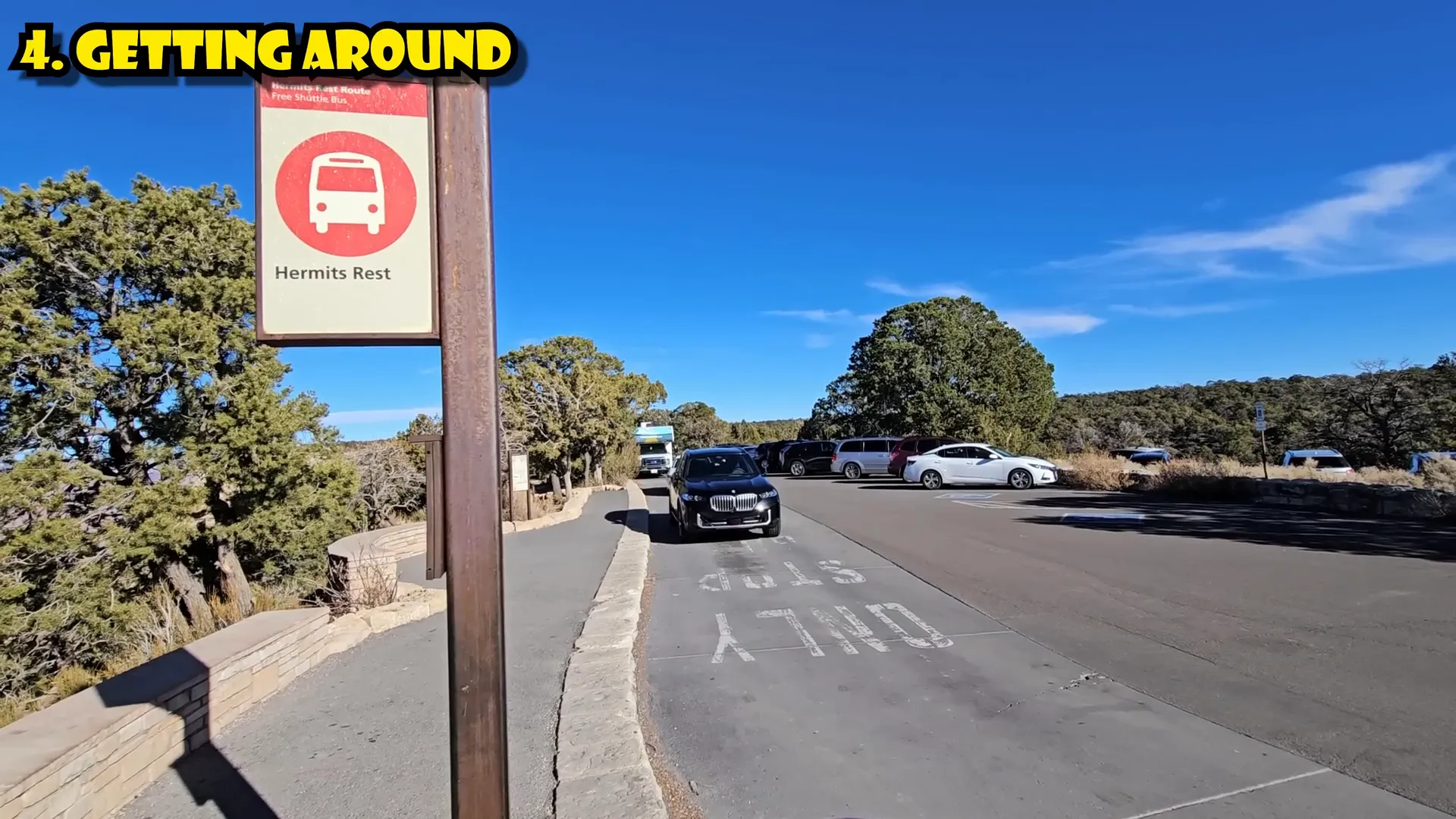
Where to Stay: Best Lodging Options in and Around the Grand Canyon
Spending multiple nights at the Grand Canyon allows visitors to soak in the grandeur, experience sunrise and sunset, and explore at a relaxed pace. Staying within the Grand Canyon Village along the South Rim is highly recommended for convenience and unparalleled views.
- El Tovar Hotel: The most iconic and luxurious hotel at the rim, offering spectacular sunrise and sunset views. It houses the historic dining room, where guests can enjoy breakfast with stunning canyon vistas. Reservations for lunch and dinner are required. Pricing is on the higher end, but the experience is unmatched.
- Bright Angel Lodge: A charming collection of rustic cabins just a 5-minute walk from El Tovar. Prices start around $229 per night, with some rooms featuring shared bathrooms for budget-conscious travelers. The lodge offers proximity to trails and amenities.
- Thunderbird Lodge and Kachina Lodge: Two motels built in the 1970s, located between El Tovar and Bright Angel. They lack on-site dining but provide good locations and check-in is done at the other lodges.
- Yavapai Lodge: Located near Market Plaza, slightly off the rim, this lodge is great for families with larger rooms featuring bunk beds. It offers multiple dining options and easy access to the General Store.
- Maswik Lodge: Set back from the rim with no canyon views, but rooms include balconies overlooking the village area. It has a convenient food court with affordable dining options, making it family-friendly.
- Phantom Ranch: Situated at the bottom of the canyon, accessible only by hiking or mule ride. It offers dormitory-style lodging and meals by reservation. Currently closed but worth monitoring for reopening if planning a multi-day hike.
For those who prefer camping, the South Rim has four main campgrounds requiring reservations, with some open year-round and others seasonal. Backcountry camping below or along the rim requires a special permit through the park’s application process.
Outside the park, nearby towns such as Tusayan, Williams, and Flagstaff offer additional hotel options, typically a 10-minute to 90-minute drive from the park entrance.
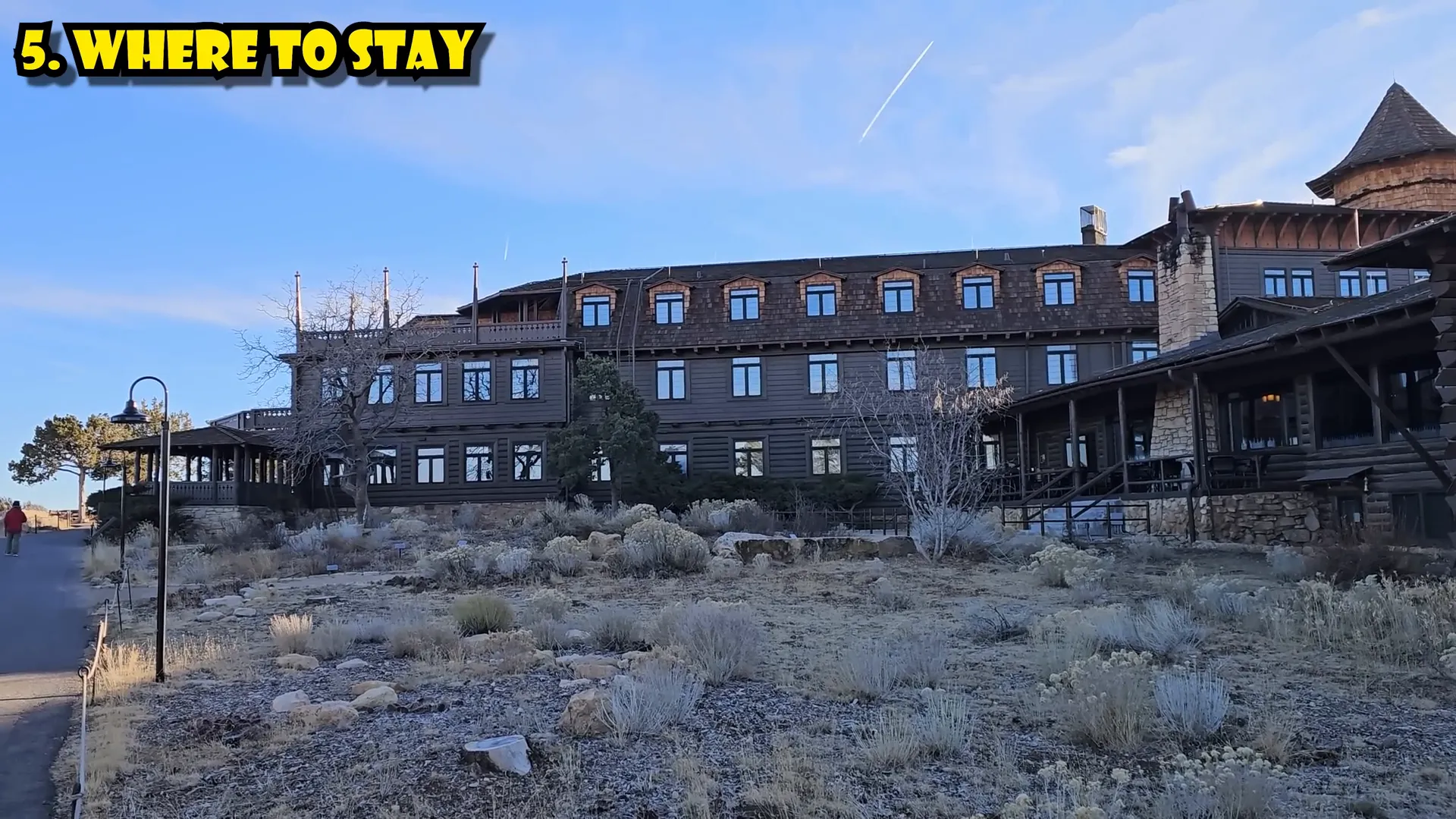
Best Times to Visit and How Long to Stay
The Grand Canyon experiences distinct seasonal variations that impact visitor experience:
- Summer: The busiest season with the hottest temperatures, especially on the canyon floor. Hiking and outdoor activities can be challenging due to heat.
- Spring and Fall: Ideal times to visit with pleasant weather and fewer crowds. Hiking is more comfortable, and the park remains lively.
- Winter: The least crowded season, offering solitude and lower lodging rates. However, some roads and the North Rim close due to snow and ice. Trails may be icy, requiring caution and equipment like crampons.
Most visitors opt for a day trip, often just stopping at Mather Point for a quick view. However, spending at least 2 to 3 days is highly recommended to truly appreciate the park’s vastness, enjoy multiple hikes, and take in various viewpoints. Combining visits to the South Rim and North Rim can extend your adventure, though the 4-hour drive between them requires planning.
Dining and Food Options at the Grand Canyon
Unlike some national parks with limited food availability, the Grand Canyon offers diverse dining options ranging from historic fine dining to quick service.
- El Tovar Dining Room: The grandest dining option, serving breakfast walk-ins with views and reserved lunch/dinner. The menu features classics like eggs benedict and prime rib. Reservations are essential for dinner, especially during holidays.
- Bright Angel Lodge Eateries: Includes the Fred Harvey Cafe (American diner-style meals), the Cocktail Lounge (smaller menu with beer and liquor), and the Fountainette for quick-serve items like Nathan’s hot dogs with canyon views.
- Arizona Steakhouse: Table service restaurant open for lunch and dinner, though wait times can be long during peak hours.
- Yavapai Lodge Dining: Offers a dining hall with a “Chuck Wagon” style dinner (protein with sides), a tavern with burgers, and a coffee shop. Prices are moderate, and the variety suits families.
- General Store at Market Plaza: A large supermarket with essentials, produce, camping supplies, and grab-and-go snacks. Open until 8 p.m., it’s a convenient spot to stock up for hikes or picnics.
- Maswik Lodge Food Court: Affordable quick service with salad bars, barbecue, pizza, and Southwest tacos. The BBQ tri-tip with sides is a popular choice.
- Phantom Ranch: Provides meals by reservation only for hikers staying at the bottom of the canyon.
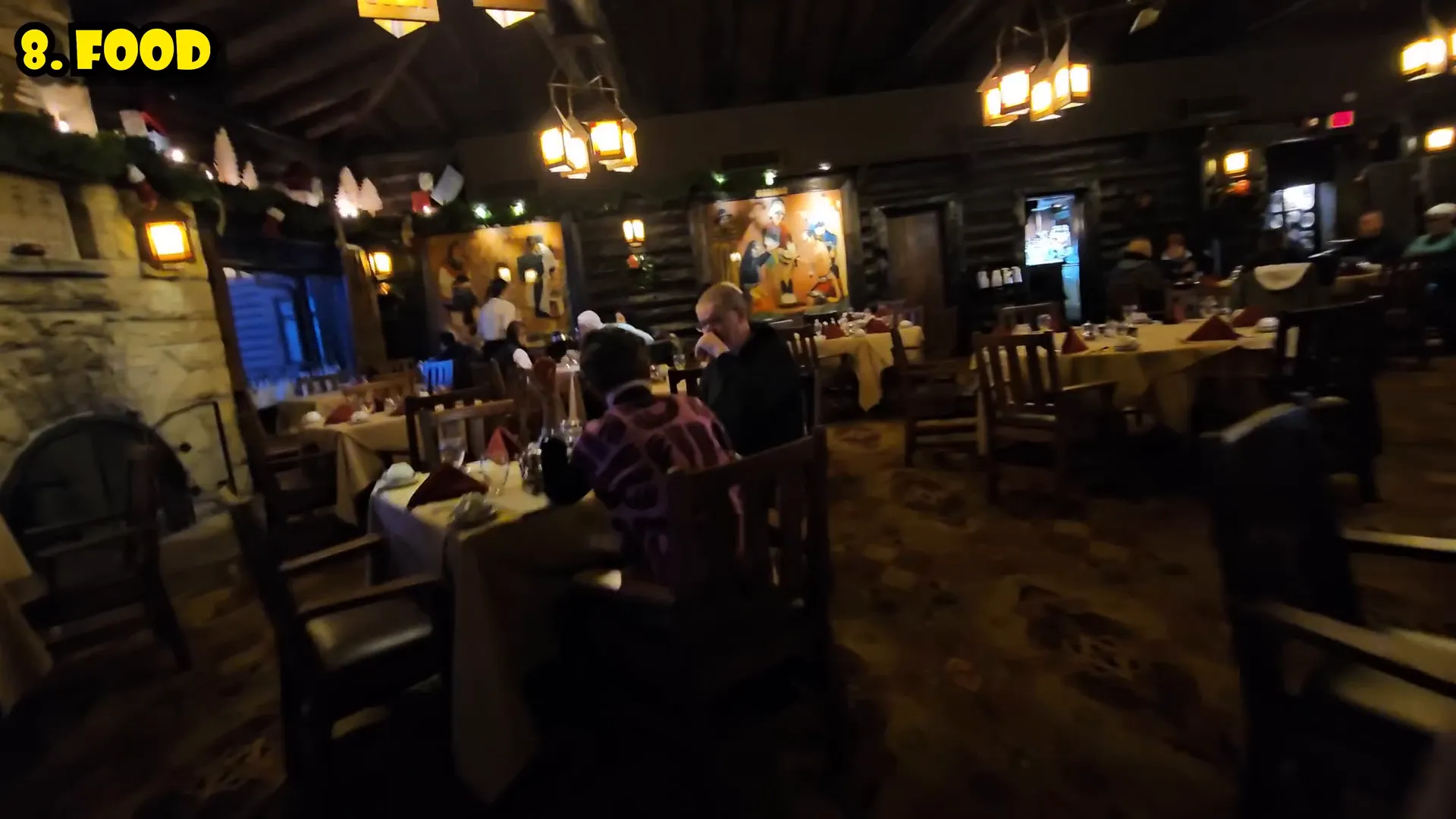
Top Things to Do and Hiking Trails for All Levels
The Grand Canyon offers far more than just spectacular views. Hiking is the second most popular activity, revealing hidden perspectives not visible from the rim. Here are some of the best trails and activities for visitors:
Popular Hiking Trails
- Bright Angel Trail: The most famous trail, it descends from the South Rim all the way to the canyon floor. Beginners can hike down a short distance (currently only a half-mile due to construction) and return. Remember, hiking down is easier than hiking back up—always conserve energy for the return trip. For full descents, overnight camping or Phantom Ranch lodging is necessary.
- South Kaibab Trail: Known for stunning panoramic views, this trail requires shuttle access as there is no parking at the trailhead. Popular turnaround points include Ooh Aah Point and Cedar Ridge, both offering rewarding vistas without the full canyon descent. Hiking sticks are recommended due to steep and sometimes slippery terrain.
- Hermit Trail: A less crowded, steep, and rugged trail starting at Hermit’s Rest. It is unmaintained in some areas and leads down to the Colorado River over 9 miles. Ideal for experienced hikers seeking solitude and challenge. Amenities at the trailhead include pit toilets and a gift shop with cold snacks.
- Rim Trail: A mostly paved 14-mile trail running along the South Rim from the South Kaibab Trailhead to Hermit’s Rest. It offers easy walking with spectacular canyon views and shuttle stops along the way, perfect for casual walkers and families.
Other Activities
- Sunrise and Sunset Viewing: Mather Point is the classic spot for sunrise and sunset, though it can get crowded. Staying near the rim, such as at El Tovar, allows for magical, less crowded experiences right outside your hotel. Other excellent viewpoints include the Lookout Studio near Bright Angel Lodge and the Desert View Watchtower at the park’s east entrance.
- Desert View Drive: A scenic 20-mile drive east from the Village Center offers forested landscapes, uncrowded overlooks, and culminates at the historic Desert View Watchtower. Visitors can climb to the top for panoramic views of the Colorado River and canyon walls. The area also includes a Native American gift shop, market, deli, campground, and the only gas station in the park.
- Shopping and Cultural Experiences: The Hopi House near El Tovar is a historic building featuring Native American arts and crafts, providing opportunities to purchase authentic souvenirs and appreciate indigenous culture.
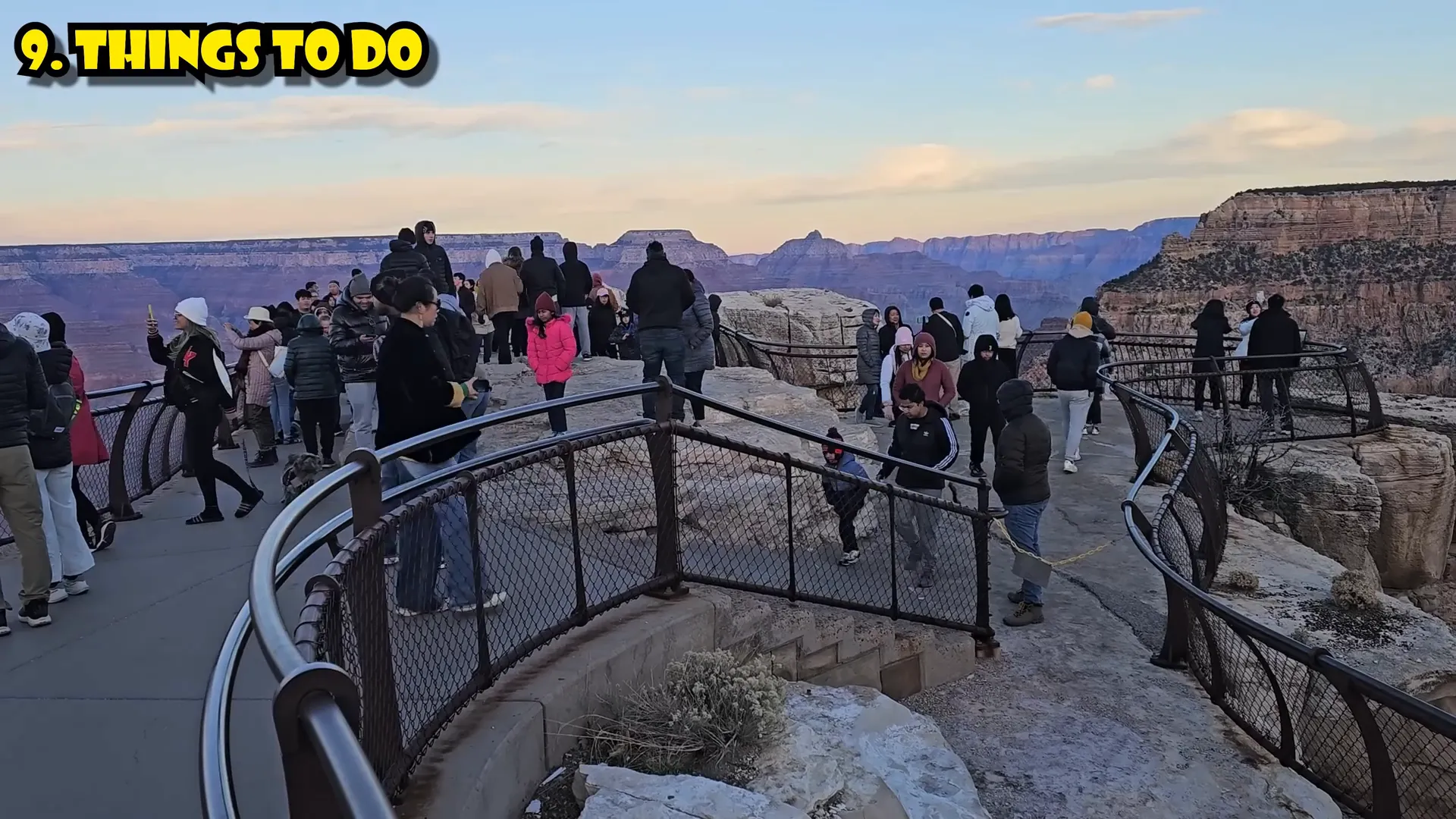
Additional Travel Tips and Insights
Visitors should be prepared for limited cell service outside the Village and Visitor Center areas. Download offline maps or bring paper maps for navigation. Driving requires caution, especially with international visitors who may be unfamiliar with U.S. road rules. Avoid driving in peak season if possible, and rely on the shuttle system to reduce stress.
For those planning a trip to Southern Utah’s national parks, the Grand Canyon pairs beautifully with Zion National Park, Bryce Canyon, and even Death Valley for extended road trips filled with diverse landscapes and adventures. To explore vacation rental options near these parks, consider browsing [Grand Canyon vacation rentals](https://staycopperrock.com/activities/grand-canyon/), [Zion National Park vacation rentals](https://staycopperrock.com/top-favorite-vacation-rentals-near-zion-national-park/), and [Bryce Canyon vacation rentals](https://staycopperrock.com/activities/bryce-canyon/).
Choosing a vacation rental with a full kitchen and outdoor patio can enhance your stay near these parks, allowing you to relax and enjoy nature in comfort after a day of exploration. For more ideas on the best things to do in Southern Utah, check out our guide to [Top 5 Must-Do Activities in Southern Utah](https://staycopperrock.com/exploring-southern-utah-top-5-must-do-activities/).
Frequently Asked Questions (FAQ)
What is the best time of year to visit the Grand Canyon?
Spring and fall offer the best weather for hiking and exploring, with mild temperatures and manageable crowds. Summer is hot and busy, while winter is quiet but can bring snow and icy conditions.
How long should I plan to stay at the Grand Canyon?
While many visitors do a day trip, spending 2 to 3 days allows you to experience multiple viewpoints, hikes, and activities without rushing.
Are there accommodations inside the Grand Canyon?
Yes, several lodges and hotels are located within the park, primarily along the South Rim. Options range from luxury hotels like El Tovar to rustic cabins and campgrounds. Phantom Ranch offers unique lodging at the canyon’s bottom but requires advance booking.
Can I drive my car throughout the park?
During peak seasons, parking is limited and driving is often discouraged. The free shuttle system is the most efficient way to get around. In winter, when crowds are smaller, some shuttle-only roads open to cars.
What should I bring for hiking at the Grand Canyon?
Bring plenty of water, sturdy shoes, sun protection, and hiking sticks if possible. In winter, crampons may be necessary for icy trails. Always plan your hike with enough energy to return safely.
Is food readily available inside the park?
Yes, the Grand Canyon offers a variety of dining options from fine dining to quick service and grocery stores. Planning ahead is recommended for popular restaurants like El Tovar Dining Room.
Conclusion
The Grand Canyon National Park is a destination that truly captivates visitors with its immense scale, stunning vistas, and rich history. By planning your arrival, lodging, and activities carefully, you can create a memorable adventure that goes beyond the typical day trip. Whether hiking the rim trails, witnessing a breathtaking sunrise, or enjoying a meal with canyon views, the Grand Canyon offers experiences that stay with you forever.
For travelers staying near Southern Utah’s spectacular national parks, combining your Grand Canyon adventure with nearby vacation rentals can elevate your trip. Explore the luxurious and convenient options at Stay Copper Rock to find the perfect home base for your journey through this amazing region.

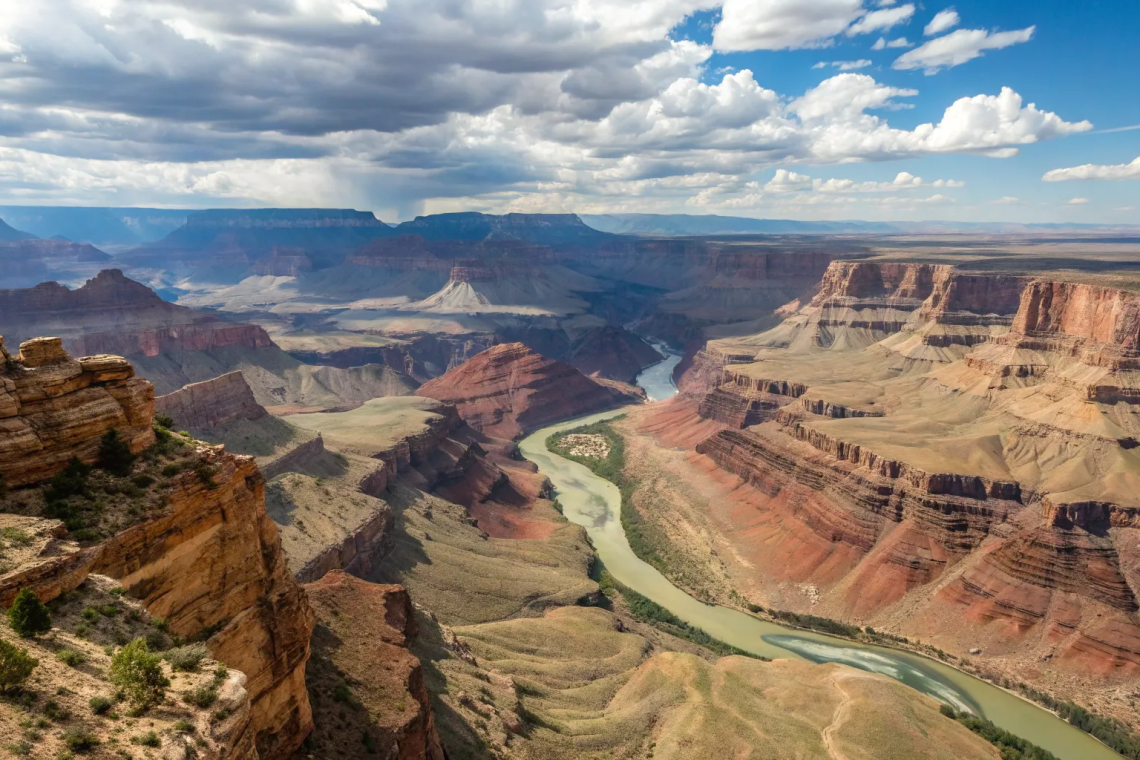






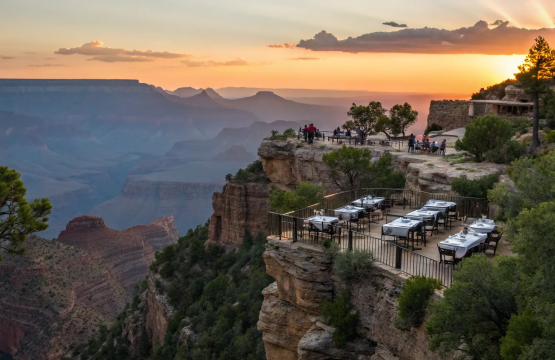
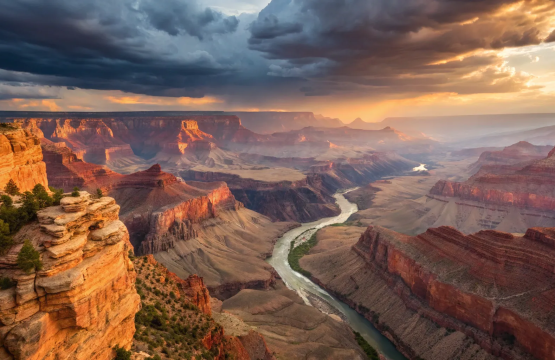
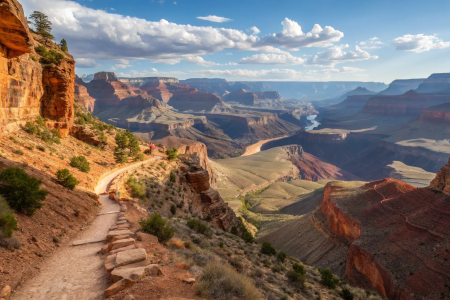
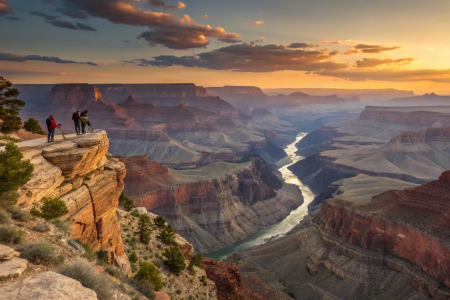
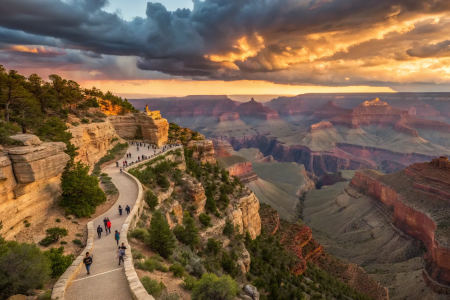

Join The Discussion